Video on development of 4-7 months
Your baby is already 4 months old. By now, you must have developed your own daily routines and interaction patterns with him. Keep interacting and playing with your baby as much as possible, as it can facilitate his cognitive and social development.
Development from 4 to 7 Months – Cantonese version with English subtitle only
Heading: Development from 4 to 7 Months
Scene: The father is playing and talking with his baby. The baby smiles at him and stretches out his hand to touch him. He also turns to his head towards the sound made by his father.
Narrator: By the fourth month, both you and your baby will have adjusted to each other. Your baby will feel secure. During this period, he will learn to coordinate his movement, vision, sense of touch and hearing to adjust to his surroundings.
Scene: Two seven months old babies lying prone and support their bodies using their palms.
Narrator: By the end of the seventh month, when lying on his tummy, your baby can push his head and body up with their palms.
Scene: The baby sits on the floor with supports from his own hands.
Narrator: He can sit with the support of his hands,
Scene: The mother holds his baby up to stand on the sofa.
Narrator: and support his full weight of his body with his legs when being held upright.
Scene: The baby sits on the sofa and reaches out his hand to grasp a toy in front of him. He then picks up the toy and play with it. Another baby sits in his stoller playing with a toy. He explores the toy by passing it from one hand to another.
Narrator: He reaches out his hands to grasps toys, explores them with both hands, or passes them from one hand to the other.
Scene: The baby sits on his high chair carefully explores the toys in his hands. Another baby sits in his stroller and recognizes and looks at his mother and sister coming over to him from a distance.
Narrator: As for vision, your baby can fixate and follow small objects at near, and recognize familiar people readily at a distance.
Scene: The baby quickly turns his head to find his mother when he hears her calling his name from one side.
Narrator: As for hearing, he turns his head readily in response to a voice produced on either side.
Scene: The baby carefully examines and explores different parts of the toy in his hands.
Narrator: Considering his cognitive development, he continuously absorbs information from the surroundings and applies about it to his day-to-day activities.
Scene: The baby plays with a toy in his hand. He shakes it and hears some noise. He finds this interesting. He then repeats the same action repeated to make out more sounds.
Narrator: He also begins to grasp the concept of “cause and effect”. For example, shaking a rattle can make it sound. Realising that he can cause these interesting reactions, he will continue to experiment with other ways to make things happen.
Scene: The baby sits in his stroller is playing with a toy in his hands. The toy suddenly drops to the floor. The baby quickly follows and looks where it has fallen, and tries to reach for it. Another baby is playing hide-and-seek with his mother. He pulls down the towel to find his mother hiding behind it.
Narrator: Before then, your baby assumed that the things that he couldn't see just didn't exist, and would not bother looking for them. But now, he begins to acquire the concept of “object permanence”, realizing that things hidden do not vanish after all, he will try to look for them.
Scene: The mother plays with her baby in the sofa. The baby makes different sounds to express his feelings.
Narrator: Concerning his language development, he can distinguish your emotional tone of voice. He starts to make and imitate different sounds. However, the sounds produced in fact have no specific meanings.
Scene: The baby cries when she can't see her mother around. She calms down quickly once her mother comes and picks her up. Another baby stands in front of a mirror. He is interested in his own image in the mirror and touches it with his hands.
Narrator: As for social development, your baby will start to develop anxiety towards strangers, but he shows great interested in his own image in the mirror.
Do you still remember that both nature and nurture affect a child's development, which is a continuous process with a certain sequence that every child would go through? Children tend to exhibit certain characteristic behaviour at different stages, when you understand the characteristics and needs of your baby at this stage, you can set reasonable expectations and provide appropriate guidance to your baby. However, parents should remember that every child is unique. Children have their own pace in development and vary in their abilities. As long as your child's development is generally in line with his age, you may not worry too much regarding the differences in performance between him and other children in individual areas. If you are unduly concerned, talk to your doctors or nurses.
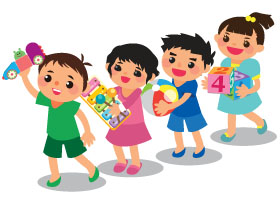
What you can do to help your baby's development
What babies can do
What you can do
I am stronger in my physical ability
Play more physical games with me
When I am lying on my tummy, I can support my body with my forearm and lift up my head

Lay me on my tummy and draw my attention with toys, or by calling my name or singing. I can exercise my neck muscles when I raise my head to look at you
Play this fun game with me several times a day. Spend altogether 30 minutes every day!
I also enjoy other physical activities with you, for example, keep switching sides to attract and play with me by my side, so that I shall turn my eyes and head from side to side to see you

I can play with my feet when I am lying on bed too!
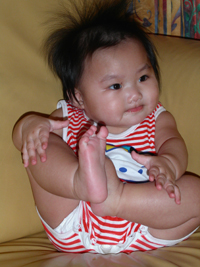
Secure ankle rattles or foot finder toys on my feet and let me play with them. This encourages me to be active in exploring and discovering my body
I try to roll from tummy to back and back to tummy
Do not leave me unattended on your bed or sofa to prevent me from falling off and getting hurt
I can reach my hands for the thing placed in front of me, grasp it and play with and release it

Encourage me to shake a toy rattle with my hand
Place a toy in front of me to encourage me to reach out to touch or grab it. This can facilitate the development of eye-hand coordination
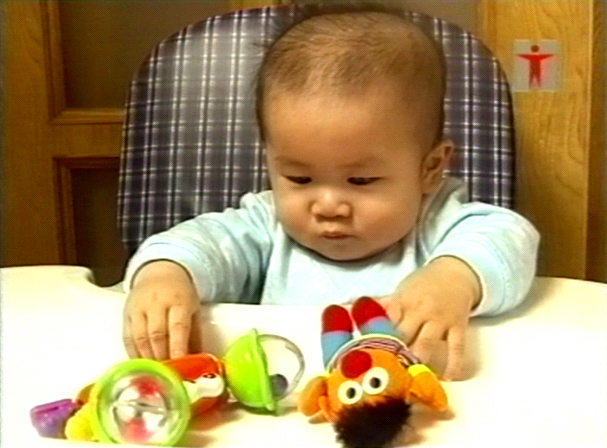
I love touching and exploring objects in my hands
Let me touch and sense different objects!
I love to touch objects with different textures
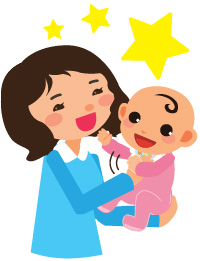
Let me play with toys with different textures, e.g. toys made from plastic, wood and cloth, etc. This can stimulate my sensory development

Apart from touching things, I enjoy being touched and hugged too!
I can see farther and clearer
Catch my eyes
I love looking at moving things. My sight can reach farther now. I can see you even if you are standing 1-2 metres (a few feet) away, and my eyes will follow you wherever you go
I am curious about my surroundings. Let me face outward when you carry me. When I am sitting in my baby chair, place me where I can see you in action
Take me out to let me see more things and more people

I can find where the sound comes from!
I want to talk to you
If you talk to me by my side, I could tell where you are and turn my head towards you
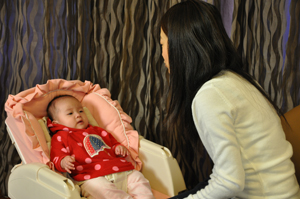
You can keep playing and talking with me while doing housework 1-2 metres (a few feet) away from me. Encourage me to learn different sounds. Talking with me can stimulate my language development and foster our relationship
Play soft music to me
My brain development is getting more complex
Encourage me to explore and testing out
I can integrate different sensory stimulations mentioned above, so I am ready to learn about the world around me through different means. For example, if you place a rattle in front of me, I can reach out for it precisely. When I shake and mouth it, I will discover its various properties such as it makes sounds when being shaken, is round and smooth, etc.

Many activities can stimulate my senses. Most importantly, I want to have you playing with me!

Engage in multi-sensory activities, e.g. laugh and make different movement like dancing in front of the mirror together with me
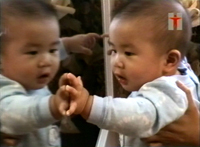
Hang colourful mobile over my cot for me to touch or kick it (But when I am 5 months old or when I can lift up my body, you should remove the hanging mobile to prevent strangling accidents)
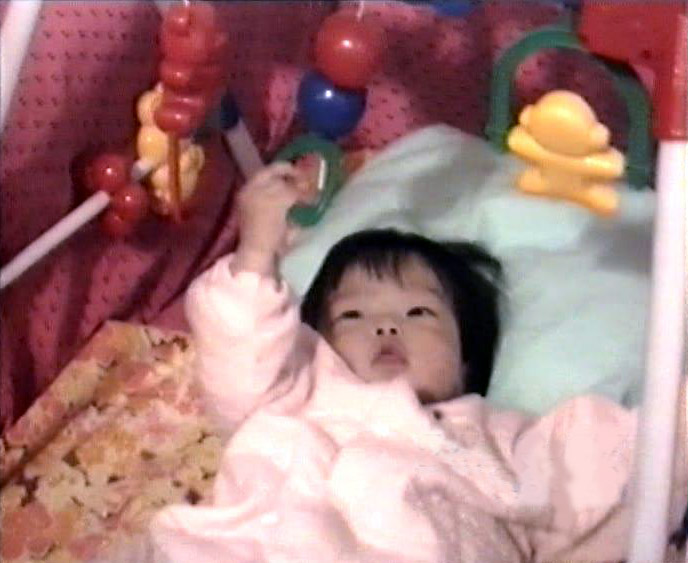
Place a multi-sensory activity board that can make sounds on the side of my cot
I have emotions, too
Understand me
I like looking at people's face and playing with them
Spend more time with me and observe me to learn about my temperament
My attention span is still short; thus I will turn my head away or appeared agitated when I am tired
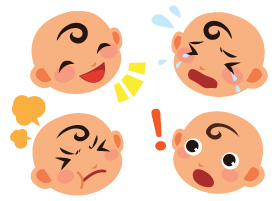
When I have lost interests or tired, please let me take a break
Are the toys of your baby safe?
There are many different toys available in the market, what would you consider when choosing toys for your baby? The right toys should be safe and matches the level and needs of your baby's development. Babies at this stage often like to explore with their hands and mouth, and they would continue to enjoy putting toys into their mouth before their first birthday. In order to ensure their safety, parents should take into consideration the design and materials of toys when shopping for babies. Let's learn how to pick safe toys for our babies!
When choosing toys for your babies, you should bear in mind:
- Rattles with small parts will be easily swallowed by babies and may lead to suffocation.
- Pay attention to the safety labels on toys; make sure that the colours and paints used on the surface of toys comply with the safety standards. Paints that are not up to standard may contain heavy metal (e.g. lead). If children lick the paints constantly, they may suffer from chronic heavy metal poisoning.
- Pick toys that are light in weight for babies. Do not pick those that are inflammable, fragile or rust easily.
- Avoid stuffed toys. Stuffed toys are difficult to clean. Babies at this age do not know how to play with these toys. If stuffed toys are put on bed, they may cover baby's face and lead to suffocation.
- The edges of toys have to be smooth. Check the toys for any sharp edges or cracks often to avoid hurting your baby.
- Clean the toys frequently, as babies like dropping them onto the floor and putting them into their mouth.
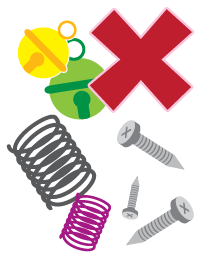
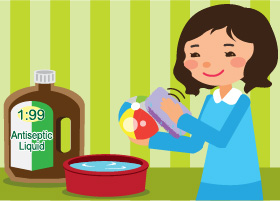
All you need in your first-aid kit
Home accidents do happen. Babies are vulnerable and are dependent in protecting themselves. So parents need to exercise home safety precautions as well as knowing how to reduce the degree of the accidental injuries at home. Having a first-aid kit at home is essential to treat minor injuries. Parents should also equip yourselves with first-aid skills to protect your vulnerable baby in emergency. If the condition serious, consult a doctor as soon as possible.
A standard first-aid kit should contain:
- Sterilized cotton
- Sterilized gauze
- Dressing Pad
- Adhesive bandages
- Elastic bandage (2″/5cm wide and 3″/7.5cm wide each)
- 70% alcohol
- Mild disinfectant
- Safety pins
- Round-ended scissors
- Triangular bandage
- Disposable gloves

